Mold flipper in Thailand: can you cut die changeover time by 40% for auto-parts lines?
Your auto-parts line in Thailand is running at full tilt, but every time a die change is needed, the entire line grinds to a halt. You see your skilled workers carefully, but slowly, maneuvering a multi-ton mold with an overhead crane. It's a tense, high-risk operation that bleeds time and money. Every minute of that downtime is lost production, a missed deadline, and a direct hit to your bottom line in one of the world's most competitive automotive manufacturing hubs. You know there has to be a better, safer, and faster way.
Yes, a mold flipper can absolutely cut die changeover time by 40% or even more for auto-parts lines. This is not a theoretical number. It is a practical and achievable benchmark. By replacing slow, hazardous crane-based methods with a dedicated, controlled machine, factories in demanding environments like Thailand's auto sector are making their operations faster, safer, and more profitable.
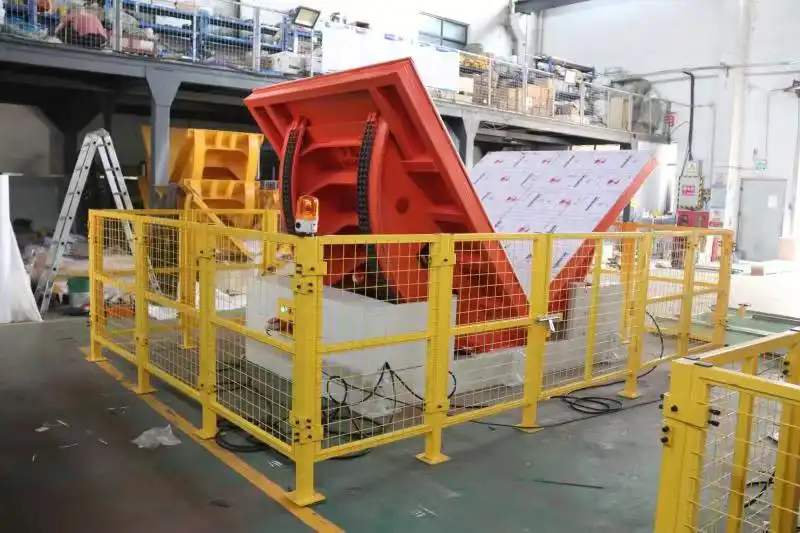
I understand that as a leader, you need more than a simple "yes." You are responsible for the safety of your people and the return on every investment. You need to see the data, understand the mechanics, and be confident that a piece of equipment will solve more problems than it creates. So, let's move beyond the headline and break down the critical questions I hear from factory owners and engineers every day. We will explore how this machine really works and how it can be a strategic asset for your facility.
How does a mold flipper actually improve safety and efficiency beyond just speed?
You've seen it happen. An overhead crane lifts a massive die. Chains are adjusted. People are standing nearby, guiding the load as it slowly, precariously turns in mid-air. It’s a necessary part of the process, but it’s also the single most dangerous moment in a die changeover. A slight imbalance, a moment of inattention, and the consequences could be catastrophic. This risk not only impacts your safety record but also creates a culture of caution that slows down the entire operation.
A mold flipper improves safety by creating a stable, controlled, and repeatable process for turning dies. It completely eliminates the need for risky crane maneuvers and manual handling for the turning operation. This directly reduces the risk of accidents and boosts operator confidence, which in turn enhances overall efficiency and workflow.
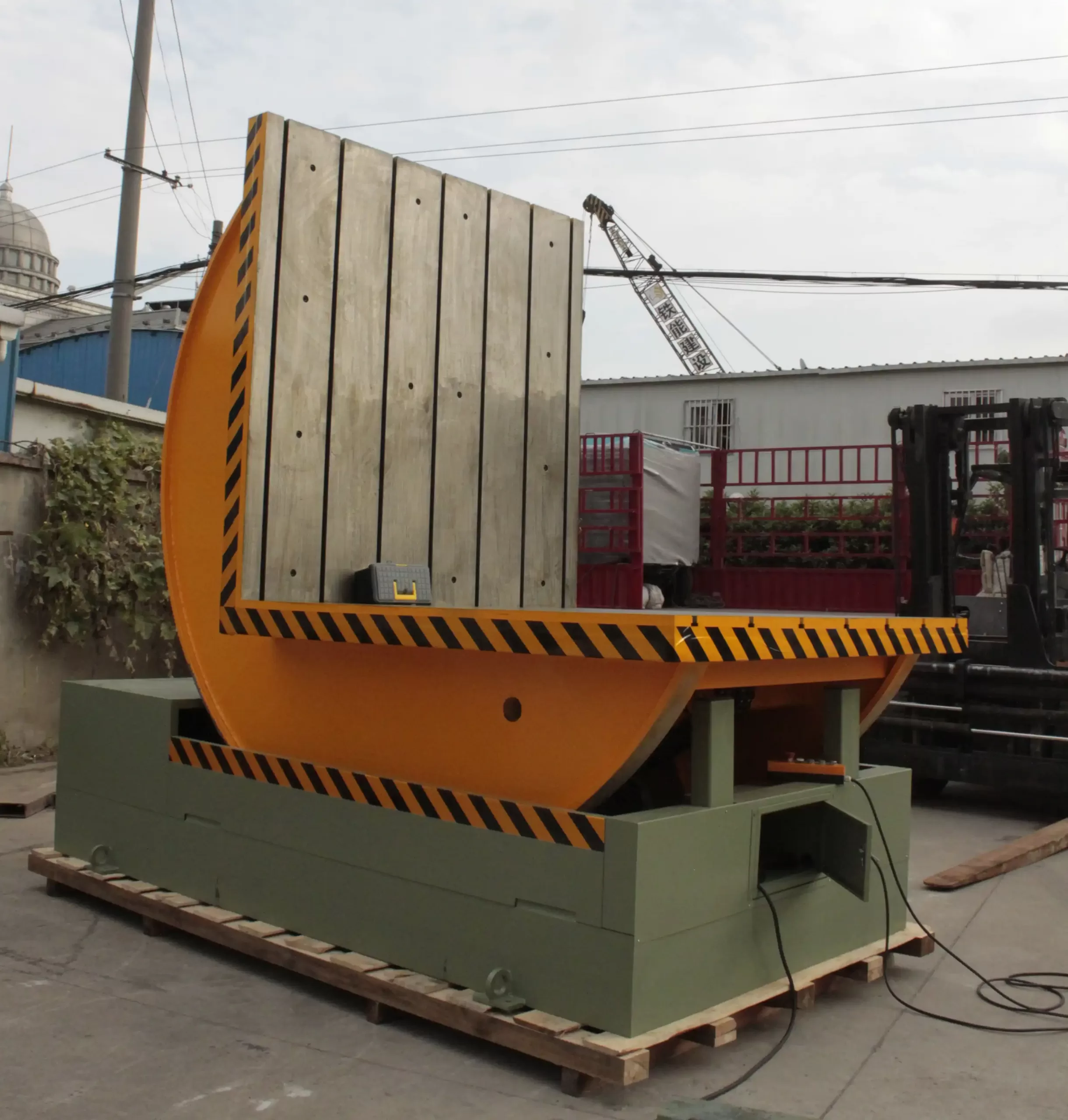
Let's dive deeper into how this works. The traditional method relies on an overhead crane, a piece of equipment designed for vertical lifting, to perform a complex rotational task. This is an off-label use that introduces significant risk. A mold flipper, or die upender, is purpose-built for one job: to turn heavy objects safely on the ground.
From Unstable Swing to Controlled Rotation
A mold flipper operates on a simple principle. The die is placed on a sturdy platform at ground level. The machine then uses powerful hydraulic or electromechanical systems to smoothly rotate the die to the desired angle, typically 90 degrees. The entire process happens within a fixed, stable footprint. There are no swinging loads, no reliance on chains or slings to maintain balance, and no need for personnel to be in close proximity to a suspended, multi-ton object. The center of gravity is managed by the machine's engineering, not by an operator's judgment call. This shift from a dynamic, high-risk aerial maneuver to a static, low-risk ground-level operation is the foundation of its safety benefits.
Freeing Up Critical Resources
Efficiency gains go beyond the changeover time itself. Your overhead crane is often a major bottleneck in the factory. It’s needed for loading raw materials, moving finished products, and general maintenance. When it’s tied up for 30-60 minutes performing a delicate die-turning operation, other critical tasks are put on hold. By delegating the turning task to a dedicated mold flipper, you free up the crane to perform the job it was actually designed for: lifting and moving. This single change can have a ripple effect, improving workflow throughout the entire plant and increasing your overall asset utilization.
A Comparative Look
Let's look at a clear comparison.
| Feature | Traditional Crane Method | Dedicated Mold Flipper |
|---|---|---|
| Safety Risk | High (suspended load, potential for drops, chain failure) | Low (stable, ground-level operation) |
| Process Control | Operator-dependent, low repeatability | Machine-controlled, high repeatability |
| Manpower Required | 2-3 operators (crane operator, spotters) | 1 operator |
| Time per Operation | 30-60 minutes | 5-10 minutes |
| Crane Availability | Blocked for the entire operation | Blocked only for placing/removing the die |
| Risk of Damage | High (accidental impacts, dropping) | Very Low (controlled, gentle movement) |
For a facility like yours, where aging equipment is a concern, putting unnecessary and complex stress on a 15-year-old crane is a risk you don't need to take. A mold flipper isolates this high-stress task to a new, reliable machine built specifically for it. This isn't just about speed; it's about building a more robust and predictable production process.
What's the real ROI of a mold flipper, and how do you calculate it?
As a business owner, I know you scrutinize every major purchase. A new machine has to do more than just work well; it must deliver a clear and compelling return on investment. With fluctuating energy costs and market demand, you can't afford to invest in equipment that doesn't directly contribute to the bottom line. You need to see the numbers and understand the payback period before signing any purchase order.
The real ROI of a mold flipper comes from a combination of reduced downtime, lower direct labor costs, a drastic decrease in the risk of expensive mold damage, and improved production scheduling flexibility. You can calculate it by quantifying these tangible savings against the initial investment, often revealing a payback period of less than 18 months in a high-volume setting.
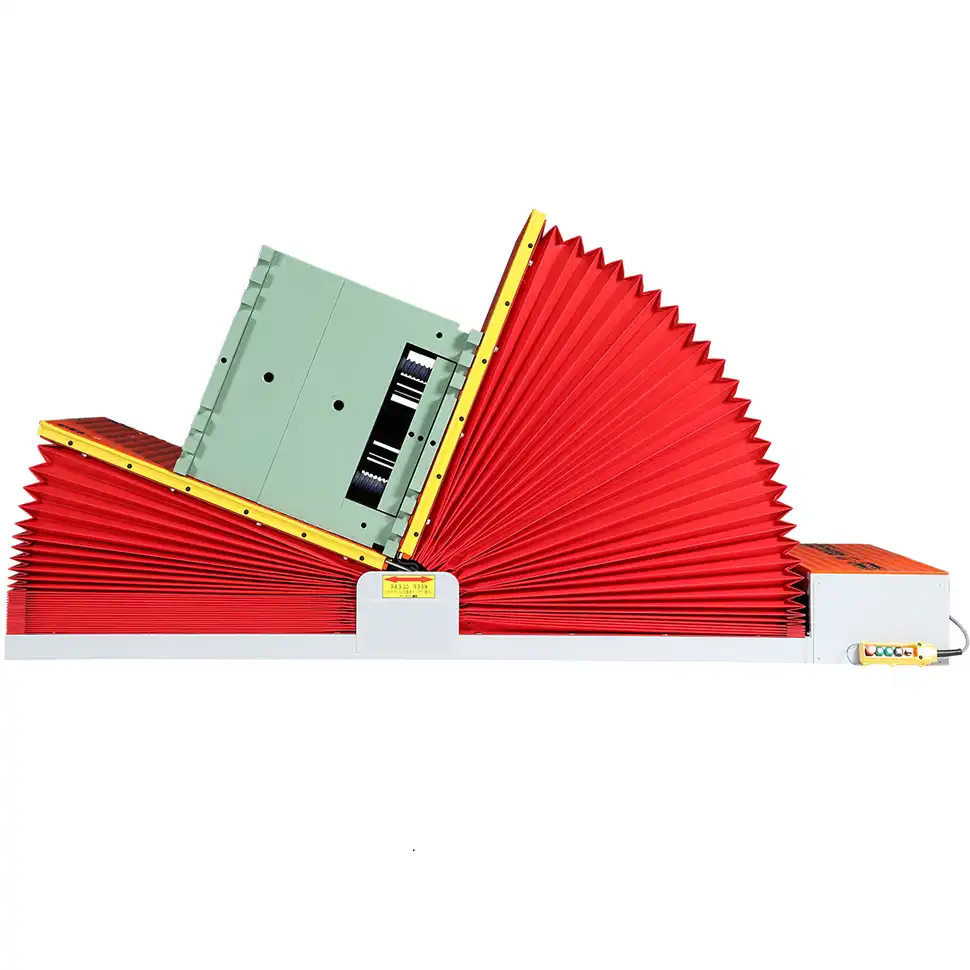
Let’s dive deeper and build a simple framework for this calculation. The ROI isn't just a single number; it's a story told through several key metrics. As an engineer who became a factory owner, I learned you have to look at both the direct and indirect savings to see the full picture.
Calculating Downtime Savings
This is the biggest and most straightforward part of the ROI. Your production line has a value per hour. Let's say, for example, that one hour of uptime on your auto-parts line generates $5,000 in revenue.
- Time Saved per Changeover: If a traditional changeover takes 45 minutes and a mold flipper reduces the turning portion from 30 minutes to 5 minutes, you save 25 minutes.
- Total Time Saved: If you perform 10 die changes per week, that’s 250 minutes (or over 4 hours) of recovered production time each week.
- Annual Savings from Downtime: 4 hours/week $5,000/hour 50 weeks/year = $100,000 per year. This number alone can often justify the investment.
Factoring in Labor and Safety Costs
A mold flipper operation typically requires only one operator, compared to the two or three needed to safely spot and manage a crane lift.
- Labor Savings: You free up one to two skilled workers to perform other value-added tasks during the changeover. If a skilled worker's loaded cost is $30/hour, saving one person's time across 10 changeovers a week adds up quickly.
- Safety and Insurance: While harder to quantify, the cost of a single accident is immense. It includes medical bills, equipment damage, production stoppage, and potential increases in insurance premiums. Reducing this risk has significant financial value and contributes to the stability you need.
The Hidden Cost of Mold Damage
A single mold or die for an automotive part can cost tens or even hundreds of thousands of dollars. Dropping one or banging it during a crane maneuver is a catastrophic financial event. A mold flipper's controlled, gentle movement virtually eliminates this risk. Avoiding just one such incident in the machine's lifetime can pay for the machine itself several times over.
Here is a simplified ROI calculation table:
| ROI Calculation Component | Calculation | Annual Value |
|---|---|---|
| Downtime Savings | (25 min/change) (10 changes/wk) (50 wks/yr) / (60 min/hr) * ($5,000/hr) | $104,167 |
| Labor Savings | (1 worker saved) ($30/hr) (45 min/change) (10 changes/wk) (50 wks/yr) / (60 min/hr) | $11,250 |
| Avoided Mold Damage (Risk-Adjusted) | (Est. 1% chance/yr of $200k incident) | $2,000 |
| Total Annual Savings | Sum of above | $117,417 |
If the mold flipper costs, say, $80,000, the payback period would be ($80,000 / $117,417) * 12 months = less than 9 months. For a pragmatic leader like you, this data-driven approach transforms the purchase from an expense into a strategic investment in achieving your goal of lowering operational costs.
Can a mold flipper integrate with existing automated systems and digital platforms?
You've made significant investments in a smart factory. Your Manufacturing Execution System (MES) and IoT platforms are the brain and nervous system of your operation, giving you the visibility to drive efficiency. The last thing you need is a standalone "dumb" machine that operates in a vacuum, creating a data black hole and disrupting your automated workflows. Any new equipment must speak the same language as your existing systems.
Absolutely. Modern mold flippers are designed for integration. They can be equipped with sensors and PLC controls that communicate seamlessly with your factory's MES or IoT platform. This allows you to track the machine's status, incorporate changeover operations into your digital production schedule, and even trigger predictive maintenance alerts.
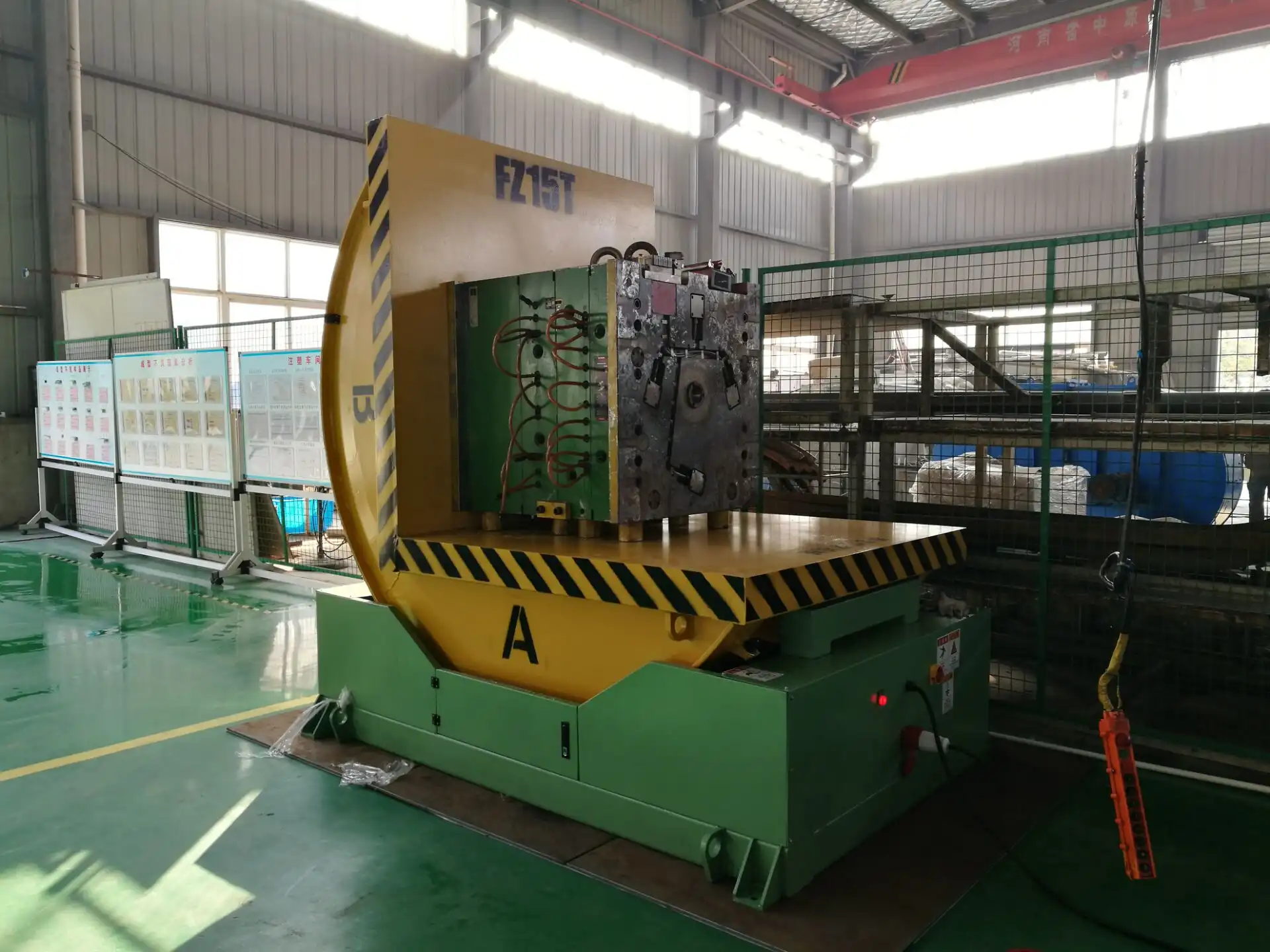
Let's dive deeper into what this integration looks like in practice. As someone who has built and equipped factories, I know that seamless data flow is non-negotiable for achieving top-tier performance. A modern mold flipper is no longer just a piece of mechanical hardware; it's an intelligent node in your production network.
Levels of Integration
Not every factory needs the same level of connectivity, so these systems are scalable. We can think of it in three tiers.
- Level 1: Standalone Operation. This is the basic model. The operator uses a control panel or remote to run the machine. It's efficient and safe, but it doesn't communicate with other systems. This is suitable for smaller shops or less critical lines.
- Level 2: PLC Handshake. This is the most common level of integration. The mold flipper's PLC (Programmable Logic Controller) is connected to the main line's control system. It can send and receive simple signals. For example, the production line can signal the flipper that a changeover is imminent, and the flipper can signal back once its task is complete, allowing the line to restart automatically. This prevents errors and ensures the process flows in the correct sequence.
- Level 3: Full MES/IoT Integration. This is the gold standard for a digitally transformed factory like yours. The mold flipper connects to your network via protocols like Ethernet/IP or Profinet. It continuously feeds data to your MES or a central database.
The Power of Data
Once the mold flipper is connected to your network, you unlock a wealth of possibilities that directly support your goals:
- Production Visualization: Your MES dashboard can show the real-time status of the mold flipper: idle, in-cycle, or fault. This gives managers a complete picture of the changeover process without having to be on the factory floor.
- Predictive Maintenance: You want to increase effective run time to 95%. To do this, you need to prevent breakdowns. By tracking motor hours, hydraulic pressure cycles, and other sensor data from the flipper, your system can predict when maintenance is needed. Instead of reacting to a failure, you can schedule maintenance during planned downtime, a core principle of Industry 4.0.
- Process Optimization: With data from every cycle, you can analyze changeover times, identify delays, and optimize the process further. This data-driven approach is key to finding the incremental gains that lead to an 8% reduction in overall operating costs.
Here’s a look at how data can be used:
| Integration Level | Data Exchange | Primary Benefit | Alignment with Your Goals |
|---|---|---|---|
| Standalone | None | Basic safety and speed | - |
| PLC Handshake | Simple Signals (Ready/Busy/Done) | Automated workflow, error-proofing | Improves production stability |
| Full MES/IoT | Rich Data (Cycle time, status, alerts, sensor readings) | Full visualization, predictive maintenance, data analysis | Drives digital transformation, increases uptime, helps reduce costs |
For a forward-thinking leader who has already embraced systems like a smart scheduling platform, integrating a mold flipper is the logical next step. It ensures that this critical piece of the puzzle is not left behind in your journey toward a fully connected and optimized factory.
What are the critical factors to consider when choosing the right mold flipper for a high-volume production line?
Making the decision to invest is the first step. The second, more critical step is choosing the right machine. In a high-volume environment like a Thai auto-parts factory, the demands are relentless. A machine that is undersized, too slow, or lacks the right features will create more problems than it solves. You need a machine that is not just a purchase, but a reliable, long-term asset.
The most critical factors are load capacity, table size, turning degree (90° vs. 180°), power system (hydraulic vs. electric), and the sophistication of its control and safety features. A thorough analysis of your specific molds, workflow, and facility layout is essential to select a machine that will perform reliably under pressure.
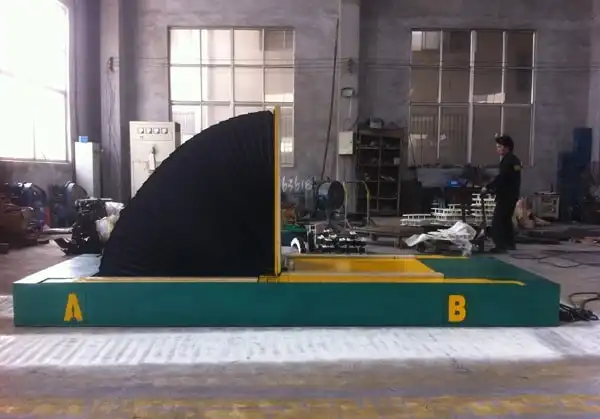
Let’s dive deeper into these selection criteria. I've spent my career designing and building this kind of equipment, and I've learned that the details matter. Getting these specifications right is the difference between a successful installation and a source of constant frustration.
Matching Capacity and Size
This seems obvious, but it's the first place people make mistakes.
- Load Capacity: You must choose a flipper rated for your heaviest mold, with a safety margin of at least 20-25%. Don't just plan for today; consider the largest molds you might use in the next 5-10 years. An overloaded machine is a safety hazard and will wear out prematurely.
- Table Size: The machine's platform must be large enough to fully support the base of your largest mold. Any overhang can create instability and put stress on the mold structure. Measure your mold dimensions (Length x Width) and ensure they fit comfortably within the flipper's table dimensions.
Choosing Between 90° and 180°
The turning degree is determined by your process needs.
- 90° Flipper: This is the most common type. It's used for turning a mold on its side for maintenance or to prepare it for insertion into a press. It's efficient, cost-effective, and meets the needs of most applications.
- 180° Flipper: This machine is needed when you have to completely invert a mold or object. This is more common in die casting or when working with two-part molds that need to be separated and flipped. These machines are more complex and generally more expensive.
Hydraulic vs. Electric: A Performance Trade-off
The power source affects performance, maintenance, and cost.
- Hydraulic Systems: These are the workhorses. They offer immense power, making them ideal for very heavy loads (20+ tons). They provide smooth, consistent motion. The downside is they can be messier (potential for leaks) and require regular maintenance of the hydraulic fluid and filters.
- Electric Systems: Powered by electromechanical screw jacks or gear motors, these are becoming more popular. They are cleaner (no oil), offer very precise control, and generally require less maintenance. They are often quieter and more energy-efficient. However, they can be more expensive upfront for very high load capacities.
This table provides a simple comparison:
| Factor | Hydraulic Flipper | Electric Flipper |
|---|---|---|
| Load Capacity | Excellent, especially for >20 tons | Good, but can be costly for very high loads |
| Speed | Generally faster for heavy loads | Can be slower, but very precise |
| Control Precision | Good | Excellent |
| Maintenance | Higher (fluid, filters, seals) | Lower (lubrication, motor checks) |
| Cleanliness | Potential for oil leaks | Very clean, ideal for sensitive environments |
| Initial Cost | More cost-effective for heavy loads | Can be higher, especially for heavy loads |
Choosing the right machine is a consultative process. It's about a supplier truly understanding your operations. When I work with clients, I don't just ask for a spec sheet. I ask about their workflow, their biggest challenges, and their goals for the next five years. This ensures the machine we provide is not just a product, but a solution that fits perfectly into their long-term strategy.
My Insights: From Machine Supplier to Strategic Partner
I started my career on the factory floor. I wasn't an executive; I was an engineer getting my hands dirty, learning how machines work and, more importantly, how they fail. When I later built my own factory, SHJLPACK, I carried that experience with me. I remember the constant pressure to reduce costs, improve uptime, and keep my people safe. I understand the challenges you face, Javier, not from a textbook, but from lived experience.
That journey taught me a fundamental lesson: the most successful business relationships are not transactional. They are partnerships. A client like you, a leader responsible for a massive operation and hundreds of employees, isn't just buying a piece of steel. You are buying a promise. A promise of reliability, a promise of performance, and a promise of support. You are looking for a partner who can help you solve the core challenges of your business—market volatility, aging infrastructure, and the relentless pressure on profitability.
I recall a client in the steel industry, much like yourself. He was focused on a single coil wrapping machine. But we started talking. Not just about the machine's speed, but about his entire packaging line. We discussed how market demand was forcing him to handle smaller, more varied orders, which was destroying his line's efficiency. The problem wasn't just wrapping speed; it was the changeover time between different coil sizes.
By looking at the whole system, we proposed a solution that included not just a faster machine, but one designed for rapid changeovers. It cost slightly more upfront, but it gave him the flexibility to handle the market's new demands profitably. We moved from being a supplier of one machine to a partner in solving his bigger strategic problem. That is the philosophy behind SHJLPACK. It's why our slogan is "TOTAL SOLUTION FOR WRAPPING MACHINE". We believe a machine like a mold flipper isn't just about cutting changeover time by 40%. It's a strategic tool. It's a step toward building a more resilient, agile, and future-proof factory that can thrive no matter what the market throws at it. That is the kind of partnership I am dedicated to building.
Conclusion
A mold flipper is more than equipment. It is a strategic investment in speed, safety, and efficiency, directly impacting your factory's profitability and competitive edge.




